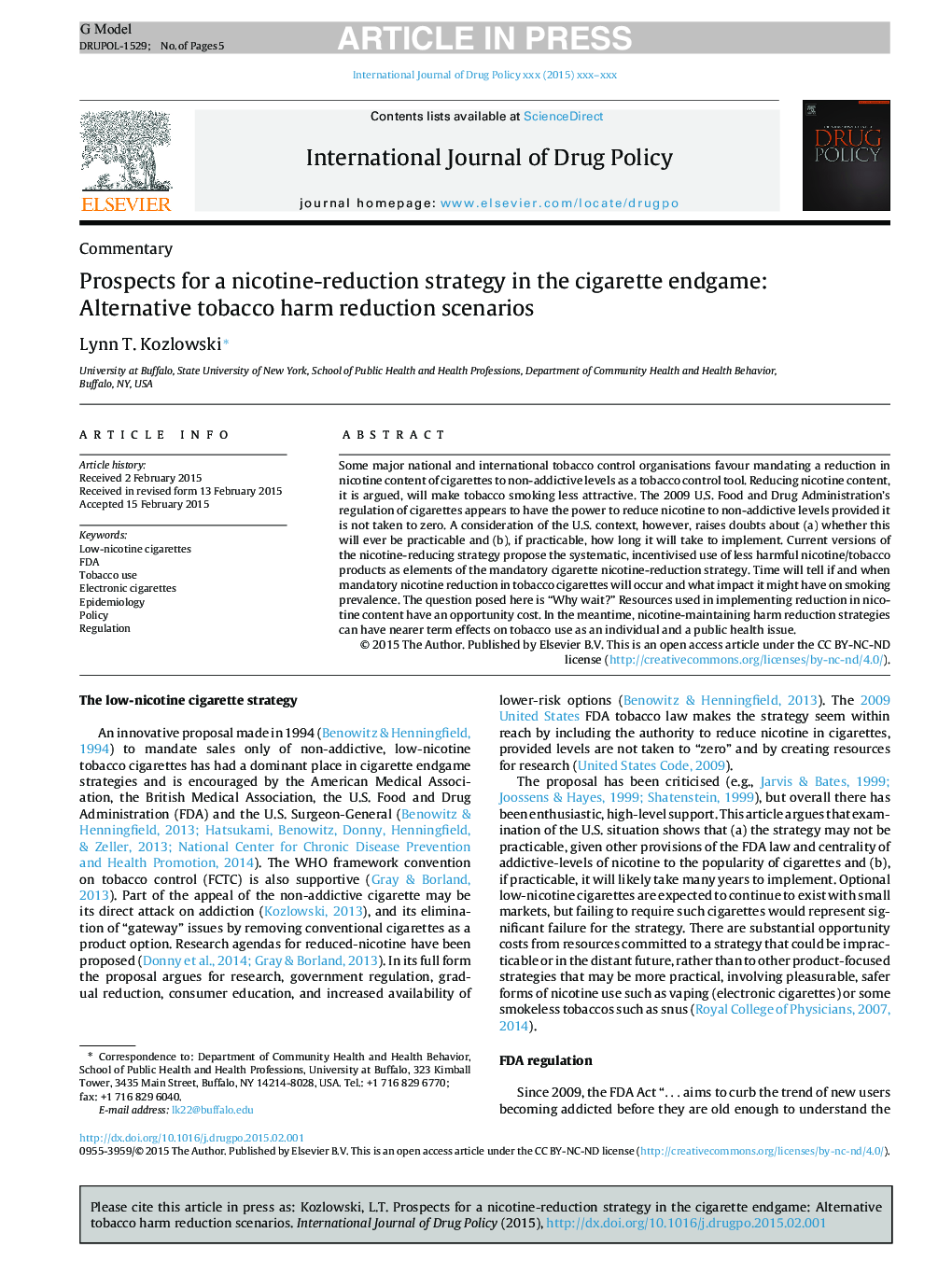| Article ID | Journal | Published Year | Pages | File Type |
|---|---|---|---|---|
| 7513357 | International Journal of Drug Policy | 2015 | 5 Pages |
Abstract
Some major national and international tobacco control organisations favour mandating a reduction in nicotine content of cigarettes to non-addictive levels as a tobacco control tool. Reducing nicotine content, it is argued, will make tobacco smoking less attractive. The 2009 U.S. Food and Drug Administration's regulation of cigarettes appears to have the power to reduce nicotine to non-addictive levels provided it is not taken to zero. A consideration of the U.S. context, however, raises doubts about (a) whether this will ever be practicable and (b), if practicable, how long it will take to implement. Current versions of the nicotine-reducing strategy propose the systematic, incentivised use of less harmful nicotine/tobacco products as elements of the mandatory cigarette nicotine-reduction strategy. Time will tell if and when mandatory nicotine reduction in tobacco cigarettes will occur and what impact it might have on smoking prevalence. The question posed here is “Why wait?” Resources used in implementing reduction in nicotine content have an opportunity cost. In the meantime, nicotine-maintaining harm reduction strategies can have nearer term effects on tobacco use as an individual and a public health issue.
Related Topics
Health Sciences
Medicine and Dentistry
Psychiatry and Mental Health
Authors
Lynn T. Kozlowski,
